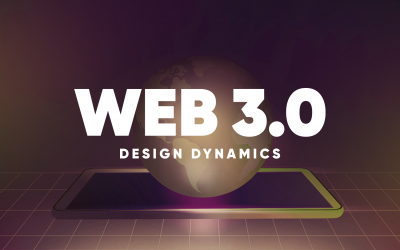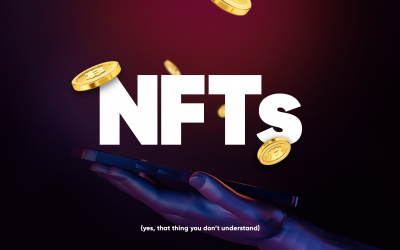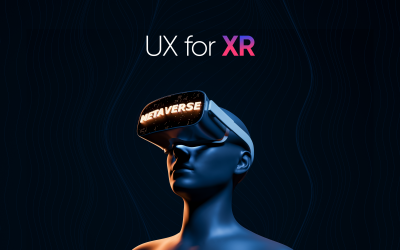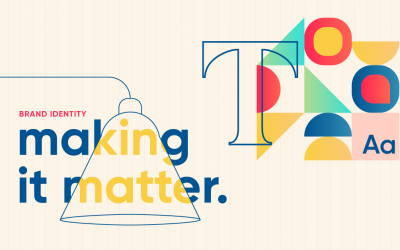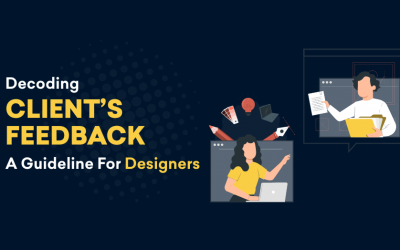Everyone has a personal brand, even you!
Personal branding is a must in today’s era. To have a distinctive standing amongst others, build your unique identity over time so that you can sell off your skills or market yourself – the right way!
On the surface, it’s all about how your name appears on search engines like Google or Bing, how these platforms show different results when someone searches for your name, or more importantly, a particular skill set or a key phrase that shows up your name because you have mentioned those skills on your social platforms.
Everything associated with you, your name, skills, education, achievements, or more, is part of your personal branding. In a nutshell, your personal brand refers to how you promote yourself. Use your name professionally across all online platforms that you use; having a unamusedperson@abc.com email address isn’t going to shine a light on your personal brand. So, if you have such a gloomy email, change it ASAP!
You use your personal branding to differentiate yourself from others. Done well, you can tie your personal branding in with your business in ways no corporate branding can possibly exceed. Effectively building up your personal brand is the way onward.
Before we start on how you can constructively plan out your personal brand, you need to understand that personal brand-builders always have niched-down skills, are strategic, and most importantly, consistent.
Let’s roll the dice and dig in further to explore more about personal branding, the practical steps involved, why you should have one, and what to do about it.
Why Should You Build A Personal Brand?
Since your personal brand truly captures the essence of who you are and what you can bring to the table, it creates a solid foundation for crafting powerful connections and attracting leads for new possible opportunities.
In 2020, approx. 43% of the US workforce is comprised of freelancers. Imagine the possibilities. Having a freelance profile on any of the top trending freelancing platforms is a significant part of personal branding, especially in today’s rapidly evolving digital world. A personal brand can help you land potential clients and brings in a larger paycheck. Moreover, you can also use your freelancer’s profile as a portfolio, it will help strengthen your credibility and trustworthiness.
That’s not it; solidify your social media presence. Not by sharing memes – you don’t want to be known as a meme master anyway, but by sharing your ideas, thoughts, future aspirations, and anything solid that resonates with your personal brand. LinkedIn and Twitter are great social platforms to have a strong presence.
Steps to Build Up Your Personal Brand
1. Figure out who you are and what you want to accomplish
Be authentic and honest about yourself, your skill set, ambitions, ideas, and what you can offer under your services. Of course, it’s not a piece of cake for everyone, and it often feels critical to determine the answers. But you can try to identify your selling points, use the following questions as a starting point and self-evaluate yourself.
- What am I passionate about or what drives me?
- What type of work fuels energy in me, and what kind of work drains it?
- What are the areas I excel in based on my previous experiences?
- What are my short-term and long-term goals?
- What impact do I want to have in my career?
The answers to these questions may change over time, and that’s fine. Our lives evolve, and so does everything else. Likewise, your personal brand will evolve with time, so it’s important, to be honest about your ambitions as you answer these questions. It will give you a clearer picture of where you stand and what you want to achieve.
2. Determine Your Unique Value Proposition
Leveraging your distinguished skills are pretty critical to your brand identity. If you are offering similar services like everyone else in the market, unfortunately, you won’t stand out. Plus, your personal brand won’t be personal as it will not be portraying your unique standpoint. People tend to remember things that stand out from the crowd.
That’s where your value proposition comes into play. It is a short and crisp personal statement that truly encapsulates your skills that nobody else has to offer. The art of wrapping your personality into something that sells is what matters. Do it the right way, understand your unique selling points, aka strengths, and then write them down. Create a rough draft, rewrite/talk about these strengths and achievements at least 5-10 times in order to come up with a perfect one.
3. Define Your Audience
Regardless of their work domain, many people make the mistake of selling out their services to everyone. Therefore, it’s essential to have a defined niche – target audience. Once you have a clear understanding of your audience, only then your proposals or pitches would bring in some results.
Imagine fitting a box in a cylindrical-shaped cell, it won’t work. You can’t simply apply one rule to all. Your target audience should be aligned with your goals. If you are planning to start a business, then your personal niche should be well-aligned with it.
To determine your niche, start with a broad category that interests you, such as branding, marketing, finance, etc. From that point, narrow that interest down at least three times:
Marketing – Social Media Marketing – Facebook Marketing – Facebook Marketing for small businesses and startups (you can further it down even more) – Facebook Marketing for startups and small businesses using multiple campaigns and ad groups.
Imagine the difference between building a brand around marketing – broad term versus Facebook Marketing for startups and small businesses using multiple campaigns and ad groups. The first term is inclusive and would make it hard for you to sell your services and set yourself apart. In comparison, the niched-down service will allow you to offer a well-defined service to a well-defined target audience. In a nutshell, it’s much easier to be an expert in a small niche than a massive one.
4. Optimize Your Social Profiles
All social media platforms can be used for personal branding. However, the three top platforms for personal branding are LinkedIn, Twitter, and Instagram. While it’s imperative to have these platforms tell a cohesive story, you may want to consider starting with one instead of rushing through.
LinkedIn – The Most Impactful Platform
Over the years, LinkedIn has turned into a legitimate social media platform. From building connections with people of diverse backgrounds to sharing valuable content.
Recruiters, agencies, or even independent contractors are always on the surge of finding talent on LinkedIn. Having a complete, furnished profile with regular postings and communication can increase your chances of getting noticed by 100%.
- Fill out every section of your LinkedIn profile. This includes an engaging storytelling approach for your “about section,” headline, current position, past experiences, certifications, recommendations, skills, and link to your portfolio/website if any.
- Make use of LinkedIn creators mode + stories, two of the newest features of 2021.
- Always use a friendly – professional display picture. Bright, uplifting, and visionary. No filtered selfies, please!
- Don’t spam the skills sections with every possible thing that you just have an idea about. Add your skills strategically. If you want to be known as a Digital Marketing Manager, consider the top skills for that role and add the relevant ones to your profile. Once you have the base, ask your immediate connections/clients for endorsements to back up those skills.
- Use relevant keywords – again, do not spam your profile by stuffing keywords everywhere. Only use keywords that perfectly aligns with your brand.
Once the basics are down, start investing at least half an hour on engagement.
- Leave 3-6 genuine and insightful comments on other influencers/industry expert’s posts. Try to find influencers of your niche; engaging on their posts will help you gain visibility.
- Try to make 5-8 meaningful connections per week. Instead of sending automated connection requests, send connection requests with a short yet meaningful personalized message.
- Create visuals or carousels about topics that interest you and contain valuable information for the readers.
Twitter – The Grandpa
It’s an old-school platform but an impactful one. One viral tweet can make or break it for you. Unfortunately, in 2021, it has become harder to break into the Twitter-sphere and become an authentic influencer, BUT you can use similar techniques as on LinkedIn to master the art of Twitter ice-breaking.
Consistency, honesty and genuine approach is the key to success on Twitter. And when it comes to personal branding, you wouldn’t want to portray yourself as a jack of all trades and master of none. The best way to skim through the crowd is to follow leaders within your industry, leave thoughtful comments on posts, retweet them, even best, share them in Twitter Moments, aka stories.
Powerful Personal Branding Website
Your personal brand website is your ticket to the online world. The hub of the content you create and share, and a destination for every member of the network you’re building to boost your presence and career.
With little investment, you can get a branded domain name and hosting service to back up your website. A simple website containing all the information about your skill set, what you have to offer to your audience, and most importantly your work samples is more than enough to start with, but with time you can keep adding more to your website e.g. feedback/reviews/testimonials of your clients, details case studies and more…
Speaking directly to your audience, helping them feel understood, and then sharing your details on how you can help them. Is going to straighten your trust.
Instead of having a website that proclaims, “Hey look how great I am, hire me, hire me” it is better to have a message that conveys, “I understand you, and here’s how I can help in growing your business.”
Conclusion
While building a personal brand seems like a lot of work, the payoff is enormous when done correctly. Stay consistent!
Whether you are looking to pitch new clients, generate business, find a mentor, accelerate your career, or want to have an individualistic approach, a personal brand can definitely get you there.
More Articles
Crafting Award-Worthy 3D Web Experiences: Lessons from Behind the Scenes
Bringing a 3D model to life on a website isn’t just about making it look good, it’s about creating an experience that is easy to navigate without compromising performance. At Face44, our team has encountered and overcome the challenges of embedding high-quality 3D...
Essentials Of An Interesting Homepage Design
Your homepage design must cater to numerous obligations. Instead of being centred about a single action, it should be created to serve a variety of audiences from various backgrounds. It must be resolutely constructed in order to accomplish this proficiently. In...
Fundamentals Of UI Design
The aim of effective User interface UI design is to eliminate as many barriers, bottlenecks, and other sources of confusion from the user experience. Above all, it is done to build a user-friendly environment that is easy for all users. Also, it helps manage and...
Chronicles Of The Best Game App Design
How many hours per week do you spend playing video games on average? That's accurate, many can easily spend half of their time playing games or looking for them on their phones. Searching and playing can take anything from 2 to 10 hours. On a daily basis, 61.6 percent...
Dynamics Of Web 3.0 Design
It seems like everyone and their pet is talking about blockchain and web 3.0. More significantly, it's on the radar of major corporations, and we all know that money brings traction. So, what exactly is Web 3.0? Web 3.0 is an AI/machine learning-driven web that will...
NFT Art & Its Impact On Design Industry
You've undoubtedly heard of NFT Art... but how exactly does it work? And why should you, as a designer, care? What exactly is NFT Art? and why is everyone talking about it? NFT Art is changing the way designers can earn money and how designers view themselves—not only...
UX For XR Future & Challenges
The crucial UX for XR needs to be improved for Extended Reality to be widely adopted! Talk of the town, 'Metaverse,' an oft-used word for the multi-user extended reality (XR) cloud, is becoming increasingly popular. Other industry leaders and the media have picked it...
Amp Up Your Visual Marketing ROI With The Fantastic 5
Visual content is easier to understand and remember than text! Do you use visual marketing as a strategy to boost your return on investment? If so, you're by no means alone. Photos are a surefire way to engage with your audience and attract new leads. Here, we'll show...
Creating Contemporary Brand Identity With Verbal & Visual Branding
When exceptional solutions are matched to the real challenges, a great brand identity emerges. With so many competitors in today's market, it's critical to grasp all the components to create a successful brand. Combine design and words to establish a distinctive brand...
Decoding Client’s Feedback – A Guideline For Designers
Client communication can be difficult for many designers. Sometimes the client has a basic understanding of the design process, and they know what they want (or what they don’t want). However, in other scenarios, the client’s feedback and approach resembles, “I’ll...




